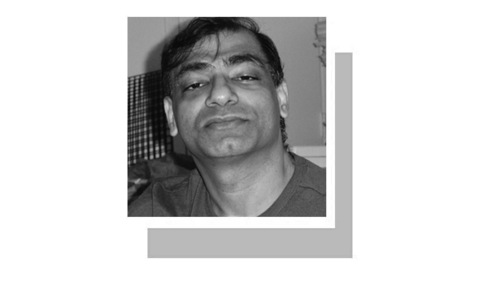BANGALORE: Milling crowds seek beer by the pitcher in noisy pubs on a Saturday night as fashionable Brigade Road comes alive in India’s technology city of Bangalore.
As young workers jostle amid the glitzy neon lights, their banter is not unusual, but their language is.
Hindi is India’s most widely spoken tongue, but its buzz in a southern city is only recent, revealing an economic shift.
“It has been just a month, and this is my first trip to the south of India,” says 23-year-old Manisha Goyal, squatting on the steps of a shopping mall as she takes in the joys of her first job, with software leader Infosys Technologies Ltd.
Job-seekers heading south reflect the rise of the states of Karnataka, Andhra Pradesh, Tamil Nadu and Kerala as new growth centres in a reforming Indian economy powered by knowledge-based industries such as software, pharmaceuticals and call centres.
The south’s rise is also seen in politics, where regional parties in federal coalitions have altered political fortunes in a nation dominated for decades by northern Hindi-speaking states.
Analysts say the south’s surge reflects the significance of higher education as India aims for growth to rival China.
India produces more than 200,000 software and computer engineers every year, compared with about 60,000 in China which has a booming manufacturing and hardware sector but is a laggard in software and its IT sector lacks English skills.
EDUCATION PAYS: The south has been aggressively wooing foreign investors since India launched economic reforms in 1991 and has built a sales pitch around colleges that mushroomed with privatization.
“Southern states have branded themselves very well,” said Lalit Srivastava, a software manager from Uttar Pradesh, India’s most populous state and traditional political powerhouse.
At 166 million, the northern state’s population is more than twice that of Karnataka or Andhra Pradesh, but it has only 1,150 university colleges compared with 1,300 in Andhra Pradesh and 1,400 in Karnataka. The result shows in growth statistics.
Some economists refer to the laggard Hindi states of Bihar, Madhya Pradesh, Rajasthan and Uttar Pradesh collectively as BIMARU, an acronym that puns on the Hindi word “bimar”, or sick.
Before the end of British rule in 1947, the eastern tea and jute city of Calcutta was the job seeker’s paradise.
Independence led to a shift to government jobs in the capital, Delhi, and then to the financial centre of Bombay on the west coast.
Now, pushed by low-cost, skilled English-speaking workers, the south is experiencing some growing pains.
Between 1994 and 2001, when reforms gathered pace, per capita incomes in the southern states grew at an annual average of between four and six per cent, while in the Hindi-speaking northern states they grew at between two and five per cent.
The literacy rate among southern states ranges from 61 per cent to 91 per cent, against a range of 47 per cent to 64 per cent in the north. But experts caution it still has problems.
TECHNOLOGY, BACK-OFFICE: The south accounts for the bulk of employment in the information technology and back-office sectors, which employ about 650,000 people, up 11 times since a decade ago. Back-office jobs grew about 50 per cent to cross 106,000 last year.
Biotechnology, a nascent sector, saw jobs almost doubling to 6,400 from 3,800 last year, and the future is considered bright.
Karnataka, which started a software revolution, is being fast matched by Andhra Pradesh, which is also home to a clutch of pharmaceutical firms including New York-listed Dr Reddy’s Laboratories Ltd.
Tamil Nadu, with domestic auto makers such as TVS Motors, has successfully roped in Ford and Korean Hyundai to build car plants. It also houses back offices for global financial leaders such as Citigroup.
Vinod Vyasulu, director of independent think tank Centre for Budget and Policy Studies, told Reuters several factors have promoted education, literacy and social welfare in the south.
These include benevolent maharajas before independence, Christian churches that set up colleges and schools, trade unions that campaigned for the poor and regional parties.
M.G. Ramachandran, a movie star who became Tamil Nadu’s chief minister in the 1970s, launched a midday meal scheme for school kids, which was lauded by the World Bank as a groundbreaking.—Reuters













































Dear visitor, the comments section is undergoing an overhaul and will return soon.